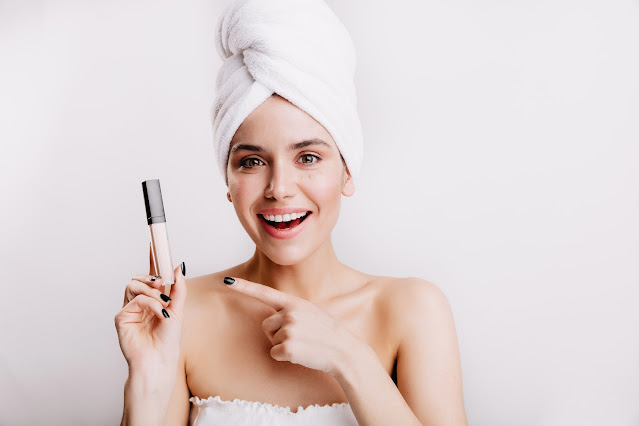Featured
- Get link
- X
- Other Apps
Do's and Don'ts of contour
Contouring is a makeup technique that can transform the face by enhancing the natural structure and creating the illusion of shadows and highlights. While it can be a powerful tool for achieving a sculpted and defined look, it can also be a bit intimidating for beginners. In this post, we'll cover the do's and don'ts of contouring, and how to optimize your makeup routine for best results.
- Choose the Right Shade
When it comes to contouring, the shade you choose is crucial. You want to select a color that is slightly darker than your natural skin tone, but not too dark that it looks unnatural or muddy. If you're not sure which shade to choose, it's always better to err on the side of caution and go for a lighter shade, which you can build up gradually.
There are a few different types of contouring products to choose from, including powders, creams, and liquids. Powders are the most popular choice as they are easy to use and blend, while creams and liquids offer more precision and control.
If you have fair skin, look for a contouring product that has cool undertones, such as taupe or gray. For medium to tan skin tones, opt for a product with warm undertones, such as a bronzer. If you have dark skin, look for a deep brown shade with red undertones.
- Blend, Blend, Blend
Blending is key to achieving a seamless and natural-looking contour. Whether you're using a cream or powder product, make sure to blend it well into your skin using a brush or sponge. You want to avoid any harsh lines or patches of product.
When it comes to blending, there are a few different techniques you can use. One popular method is to use a damp beauty sponge to blend the product into your skin. Simply apply the product to the sponge and blend it in using a stippling motion.
Another technique is to use a fluffy brush to blend the product into your skin. This works particularly well for powders as the brush picks up just the right amount of product and blends it in seamlessly.
- Consider Your Face Shape
Everyone's face is unique, so it's important to take your individual face shape into account when contouring. For example, if you have a round face, you may want to focus on sculpting your cheekbones and jawline, while if you have a square face, you may want to soften your features with a more subtle contour.
To determine your face shape, pull your hair back and examine the shape of your face in the mirror. The main face shapes are round, square, heart-shaped, and oval. Once you've identified your face shape, you can use contouring to enhance your natural features and create the illusion of a more balanced face shape.
- Don't Overdo It
One of the biggest mistakes people make when contouring is going overboard with product. Remember, the goal of contouring is to enhance your natural features, not completely transform your face. Be mindful of the amount of product you're using and build up gradually to avoid a heavy or caked-on look.
In addition, it's important to blend out any harsh lines or patches of product to achieve a seamless and natural finish. Use a light hand and focus on the areas where you want to create dimension and shadow.
- Don't Forget About Lighting
Another important factor to consider when contouring is lighting. The way your face looks in different lighting can have a significant impact on how your contour appears. Natural lighting is the best option, as it provides the most accurate representation of how your makeup looks in real life.
When applying your contour, try to do so in a well-lit area with natural light if possible. This will help you see the true effect of the product on your skin and prevent over-application.
- Do Experiment and Have Fun
At the end of the day, makeup should be fun and a form of self-expression. Don't be afraid to experiment with different products and techniques to find what works best for you. Everyone's face is unique, so what works for one person may not work for another.
The most important thing is to feel confident and comfortable in your own skin. With practice and patience, you can master the art of contouring and achieve a flawless, sculpted look that enhances your natural beauty.
Conclusion
Contouring can be a powerful tool for enhancing your natural features and achieving a sculpted, defined look. By following these do's and don'ts of contouring, you can avoid common mistakes and optimize your makeup routine for best results.
Remember to choose the right shade, blend well, consider your face shape, and avoid overdoing it with product. Lighting is also an important factor to consider when contouring, so be sure to apply your makeup in a well-lit area with natural light if possible.
With these tips and a little practice, you can master the art of contouring and create a flawless, natural-looking finish that enhances your beauty and confidence.
- Get link
- X
- Other Apps
Popular Posts

5 Best Concealer Dupes: Affordable Alternatives to High-End Brands
- Get link
- X
- Other Apps

5 Best and Affordable Makeup Setting Powders for Dry Skin
- Get link
- X
- Other Apps

Comments
Post a Comment